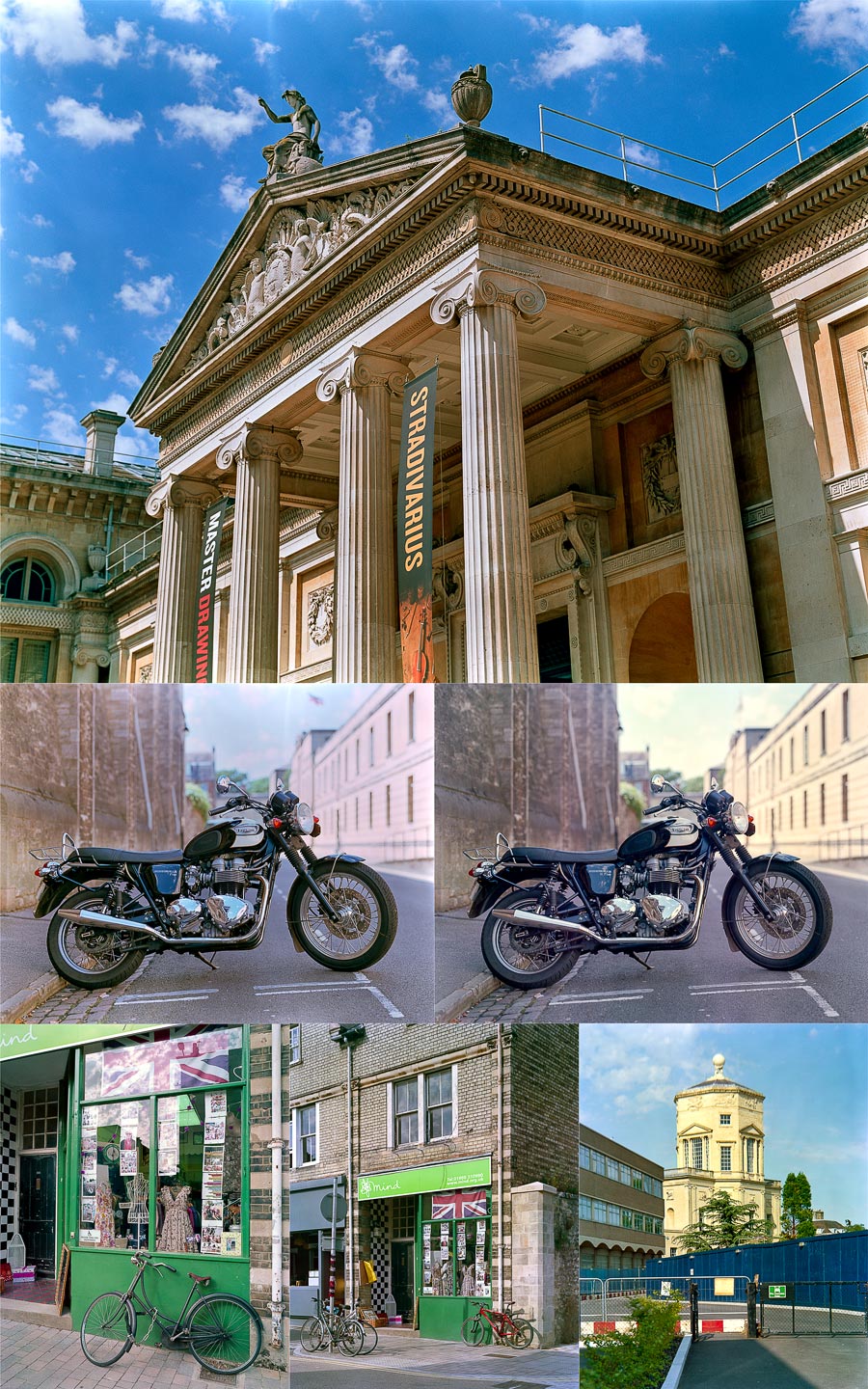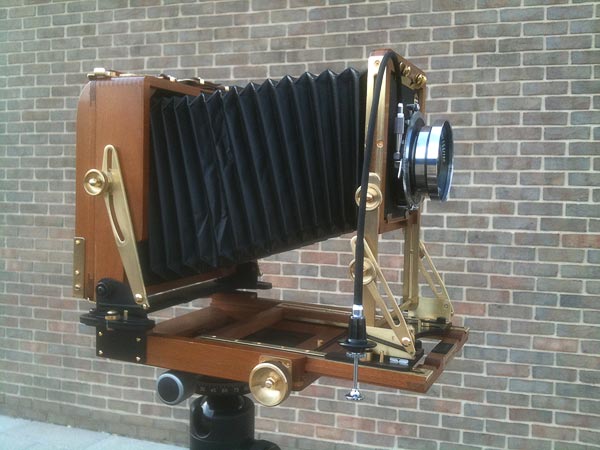Now that I’ve got a batch of C41 colour film chemistry mixed up I decided to use some large format colour film this week which I don’t usually get to use. My go to 5×4 camera tends to be a Speed Graphic because of its built in shutter and the choice of old lenses this allows me to use but the film I wanted to use has an ISO rating of 12 which means it needs a ton of light and the Speed Graphic doesn’t have a shutter speed slower than 1/30 so I ended up using my Wista Field camera which is a lot lighter and a joy to use. I bought my Wista brand new in 1990 and it’s still going strong. Back then it was a magnet every time I used it on the streets and it’s still the same now although the questions people ask me now are different, for example a common one is ‘can you still get film for that?’ The answer is yes.
These images were all made on film that isn’t designed to be used outdoors, it’s meant for duplicating existing film with the use of an enlarger and a tungsten light source but I’ve found that it works nicely outdoors. The Top image of the Ashmolean Museum and the left hand shot of the Triumph motorbike were made with Fuji slide duplicating film that expired in 2011 and the other four shots were all made with Kodak internegative film that expired in 1991. I’ve posted the two motorbike shots side by side for a comparison between both film types. The Fuji film is designed to be processed in E6 chemistry to give a positive transparency but here I’ve cross-processed it in C41 chemistry to see what would happen. I’m pleased with the results. Next I want to try using it for a portrait. Any volunteers?
[Tech info:] Wista field 5×4 camera and Schneider 180mm and 90mm lenses. Kodak inernegative and Fuji CDII slide duplicating film, both exposed at ISO12.


Wista Field 5×4 large format
